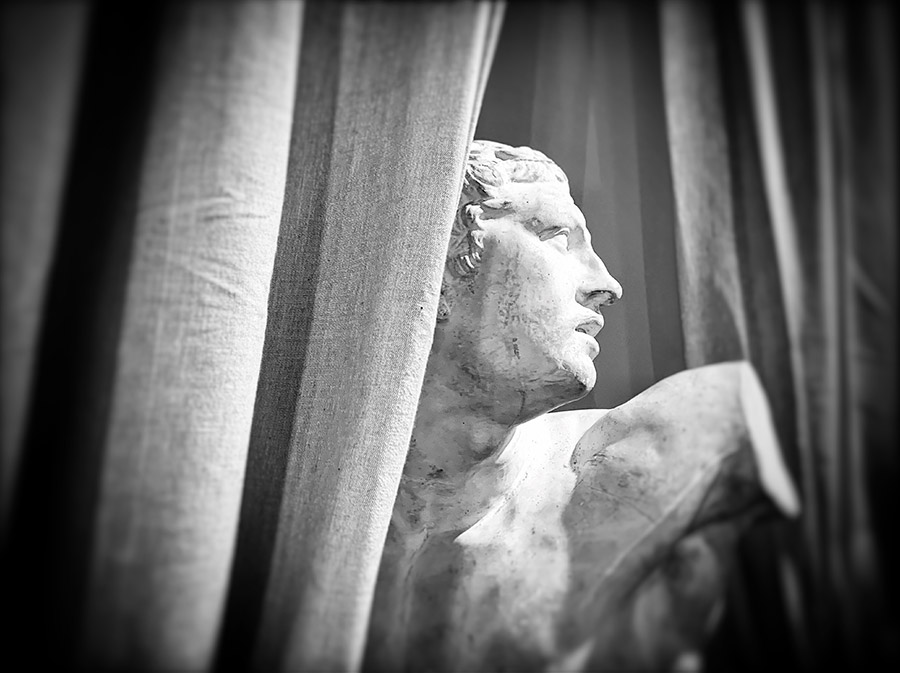
Enrico Cavalli (1848-1919) was born in Santa Maria Maggiore. As a child he lived in Grenoble and Lyon, where he attended the Academy of Fine Arts for ten years and came into contact with the painters Guiscard and Monticelli. From 1870 to 1879 Cavalli travelled to France and exhibited two portraits at the Paris Salon in 1880. He worked with his father Carlo Giuseppe, who was a teacher at the Rossetti Valentini School of Fine Arts, until 1892. When his father died, Enrico left for France with Fornara and Peretti, alternating returns to his homeland. In 1917 he took over as director of the Rossetti Valentini School of Fine Arts, which he carried on until his death.
Lorenzo Peretti Jr (1871-1953) was the last artist in the Peretti family, and thanks to the wealthy position of his father Bernardino and grandfather Lorenzo, he was able to attend boarding school in Bern and to work in Milan. At the age of eighteen, following the death of his father, he started to attend Cavalli’s school and then moved to France where he dabbled in occult sciences. An educated and eccentric modern painter of great talent, he passed away in his valley in Toceno.
Giovanni Maria Rastellini (1869-1927) started studying drawing under the guidance of his father, the painter Giovan Giacomo. He continued his studies at the Rossetti Valentini School of Fine Arts first with Carlo Giuseppe Cavalli and then with his son Enrico. He took a few courses in Brera and opened a successful studio in Milan. He worked mostly in Milan and Buttogno, but he also travelled to France and Austria to see the great artistic masterpieces in churches and art galleries. A sensitive, selfless person, he died at the young age of forty-eight.
Shortly after his birth in Buttogno, Antonio Gennari (1923-2002) and his parents moved to Argentina and returned to the Vigezzo Valley when Antonio was six. He attended the Rossetti Valentini School of Fine Arts and later Brera in Milan. In 1940 he volunteered for the front and was sent to Albania. He was later captured and deported to Germany. After the liberation he returned to his homeland and resumed his activity as a painter. His works are an evocative, allegorical, realistic and at the same time fantastical tale, with the Vigezzo valley and its inhabitants as the main characters.
Giuseppe Magistris (1911-1967) was born in Santa Maria Maggiore. He attended the School of Fine Arts, and under the guidance of Dario Giorgis he studied painting and then drawing, devoting himself to plaster copies. He went on to study painting at Brera as well as the organ and composition at the conservatory. Restless and nonconformist, he devoted himself to art even during the war, and his restlessness translated into his expressionistic works. He was condemned several times by the government for anti-fascist ideas. He travelled between Switzerland and France with exhibitions and concerts. He also managed to get commissions for the S. Paolo Museum in Brazil.
As a child Giovanni Battista Ciolina (1870-1955) attended courses at the Rossetti Valentini School of Fine Arts under the guidance of Enrico Cavalli and later attended the life drawing class at the Accademia di Venezia. In 1895-1896 he was in Lyon with Fornara, and the following year he exhibited Il filo spezzato at the Brera Triennale, a work that brought him great success and national attention. Intimism and lyricism were the fundamental traits of his work, which he expressed in all fields from paintings to frescoes, and from portraits to etchings.
Carlo Fornara (1871-1968) quickly grew interested in drawing at the Rossetti Valentini School of Fine Arts with Enrico Cavalli as his teacher. In 1891 he took part in the First Brera Triennale with La bottega del calderaio and Ricordanze, which marked the official debut of divisionism in Italy. A few years later he left for the first in a long series of stays in France with Enrico Cavalli and Lorenzo Peretti Jr. By 1899 Fornara was no longer unknown. His success had led to his friendship with Segantini, who invited him to collaborate on a piece that would appear at the 1900 Paris Exposition, and who recommended him to Alberto Grubicy. The connection between Fornara and Segantini can be seen in his works: Fornara moved towards symbolism and adopted the typical, long Segantini brushstroke.
Sign up to receive news on events, exhibitions and trainings from the Rossetti Valentini School of Fine Arts Foundation.
Iscriviti per ricevere le news su eventi, mostre, incontri di formazione organizzati dalla Fondazione Scuola di Belle Arti Rossetti Valentini.